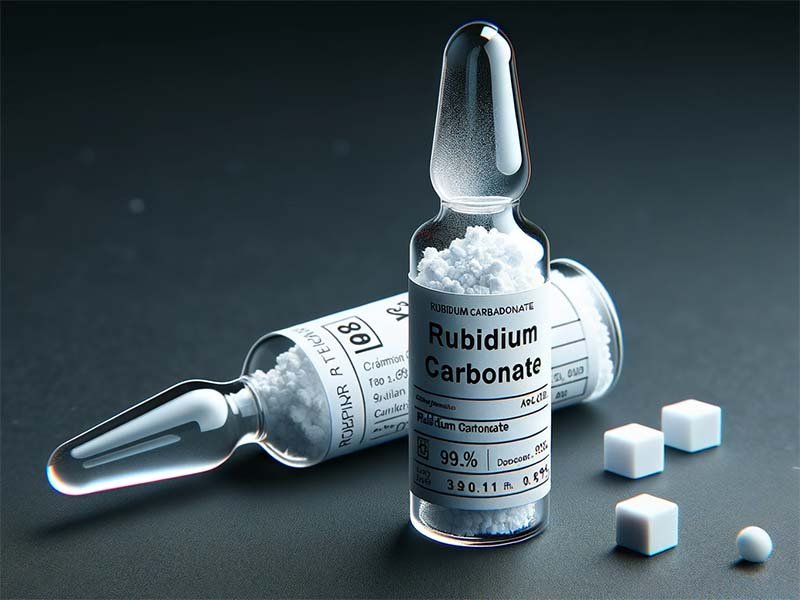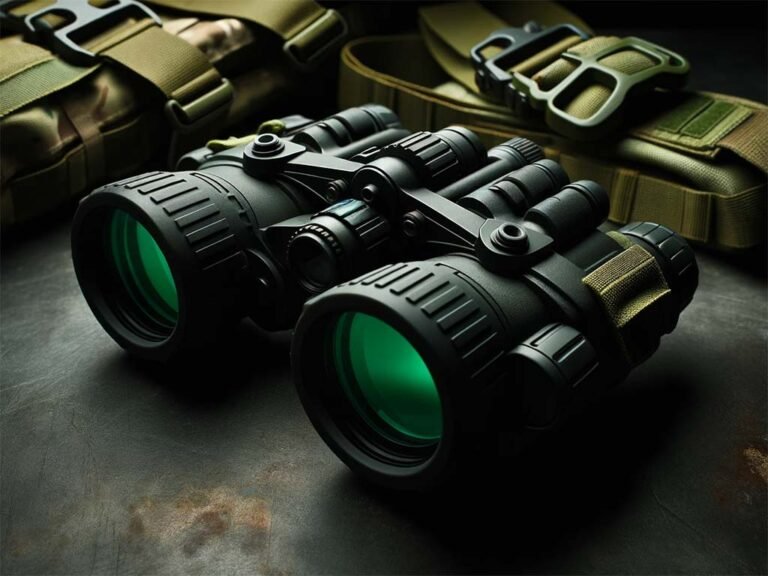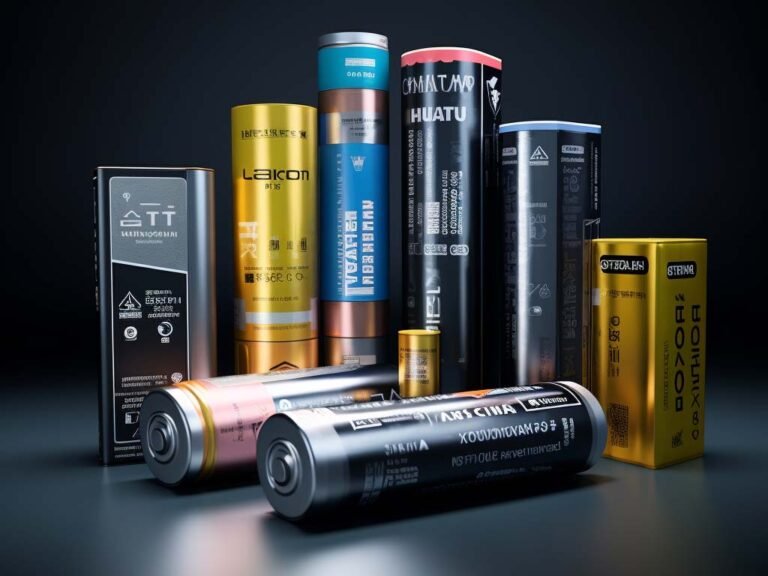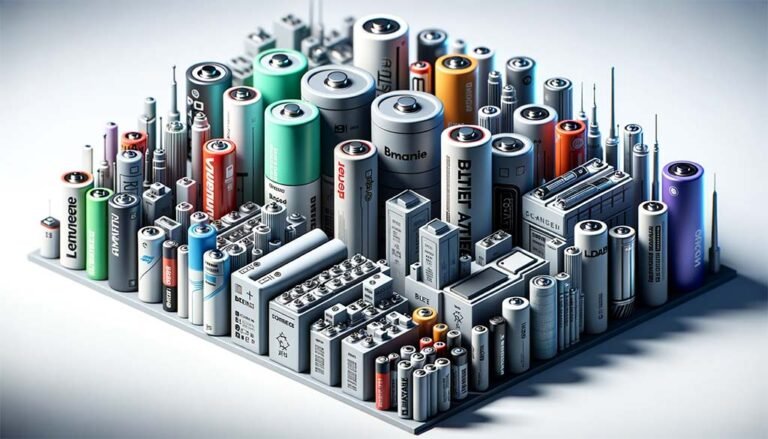
Rubidium Carbonate
Synonyms: Carbonic acid dirubidium, Dirubidium carboxide, Rubidium Salt
CAS Number: 584-09-8 , EC Number:209-530-9
Brand Name : DQ
Percentage assay:99.5%
Package Information: Bottle or 25kg/drum or customized packing
Rubidium carbonate Price
Product Information
Impurity Content (Mass Fraction)/%, Not Exceeding
| Product Grade | Li | Na | K | Cs | Ca | Mg | Fe | Al | SiO2 | Pb |
|---|---|---|---|---|---|---|---|---|---|---|
| 99.0% | 0.0010 | 0.020 | 0.050 | 0.50 | 0.0050 | 0.0010 | 0.0010 | 0.0050 | 0.0050 | 0.0010 |
| 99.5% | 0.0010 | 0.010 | 0.020 | 0.20 | 0.0050 | 0.0010 | 0.0005 | 0.0050 | 0.0050 | 0.0005 |
| 99.9% | 0.0005 | 0.0050 | 0.0080 | 0.50 | 0.0010 | 0.0005 | 0.0005 | 0.0010 | 0.0050 | 0.0005 |
| Parameter | Details | Units | Applications |
|---|---|---|---|
| Chemical Formula | Rb₂CO₃ | N/A | Chemistry, Research |
| Molecular Weight | 230.94 | g/mol | Laboratory |
| Appearance | White, hygroscopic powder | N/A | Glass Manufacturing |
| Melting Point | Decomposes at 837 | °C (1,539°F) | Industrial Processes |
| Boiling Point | Decomposes | N/A | N/A |
| Density | 3.2 | g/cm³ | Material Science |
| Solubility in Water | 186 | g/100 mL at 20°C | Chemical Solutions |
| Solubility in Other Solvents | Insoluble | N/A | N/A |
| pH | Alkaline | N/A | Water Treatment |
| Crystal Structure | Orthorhombic | N/A | Crystallography |
| Thermal Conductivity | Low | N/A | Thermal Management |
| Electrical Conductivity | Low | N/A | Electronics |
| Common Uses | Glass, catalyst | N/A | Various Industries |
| Hazards | Irritant | N/A | Safety Precautions |
Rubidium Carbonate Formul
| Reaction Type | Reactants | Products | Balanced Equation |
|---|---|---|---|
| Formation | 2 RbOH, CO₂ | Rb₂CO₃, H₂O | 2RbOH(aq)+CO2(g)→Rb2CO3(s)+H2O(l) |
| Decomposition | Rb₂CO₃ | 2 RbOH, CO₂ | Rb2CO3(s)→2RbOH(aq)+CO2(g) |
| Acid Reaction | Rb₂CO₃, 2 HCl | 2 RbCl, CO₂, H₂O | Rb2CO3(s)+2HCl(aq)→2RbCl(aq)+CO2(g)+H2O(l) |
| Solubility | Rb₂CO₃, H₂O | Rb₂CO₃(aq) | Rb2CO3(s)→Rb2CO3(aq) |
Applications of Rubidium Carbonate
| Application Area | Specific Use |
|---|---|
| Electronics | Used in the manufacturing of specialty glass for fiber optic components |
| Chemical Industry | Used as a catalyst in various chemical reactions |
| Biomedicine | Used in pharmaceuticals for certain treatments (though rare) |
| Energy | Used in magnetohydrodynamic (MHD) power generation |
| Research & Development | Used in laboratories for various types of research, including material science |
| Specialty Glass | Used in the production of special types of glass that have unique optical or structural properties |
| Telecommunications | Used in the production of certain types of optical fiber |
| Catalyst | Used to accelerate specific chemical processes |
Safety Information
| Information | |
|---|---|
| Chemical Formula | Rb2CO3 |
| Molecular Weight | 230.945 g/mol |
| Appearance | White powder, very hygroscopic |
| Storage | Store in a cool, dry place away from incompatible materials like acids |
| Hazard Classification | Irritant, Harmful if swallowed, May cause respiratory irritation |
| PPE Required | Safety goggles, Lab coat, Gloves |
| Primary Uses | Glass-making, catalyst for short-chain alcohols, preparation of rubidium metal and salts |
| Hazards | Skin, eye, and respiratory irritant |
| First Aid Measures | Provide fresh air, rinse with water, seek medical advice |
| Firefighting Measures | Use CO2, extinguishing powder, water spray; releases CO and CO2 fumes in fire |
| Accidental Release Measures | Use PPE, ensure ventilation, prevent environmental release |
| Handling Precautions | Handle under dry protective gas, avoid moisture, ensure good ventilation |
| Storage Conditions | Store in cool, dry place away from water/moisture and strong bases |
| Personal Protective Equipment | Respirators, impervious gloves, safety glasses, protective clothing |
| Physical Properties | Odorless white powder, insoluble in water, high solubility rate |
| Chemical Stability | Stable under recommended conditions, avoid water/moisture and bases |
| Toxicological Information | Causes skin and eye irritation, respiratory irritation; no known carcinogenic effects |
| Ecological Information | Avoid release into environment; no data on aquatic toxicity |
| Disposal Considerations | Dispose according to official regulations |
| Transport Information | Not listed as marine pollutant or under specific UN transport classifications |
| Regulatory Information | Complies with U.S. EPA Toxic Substances Control Act, Canadian NDSL, not listed under California Proposition 65 or REACH |
Frequently Asked Questions
Most frequent questions and answers
How can I purchase Rubidium Carbonate from your company?
You can purchase Rubidium Carbonate by visiting our website and selecting the desired quantity. Alternatively, you can contact our sales team directly for a quotation and to discuss specific requirements.
What packaging options are available for Rubidium Carbonate?
We offer various packaging options to suit different needs, including standard industry drums, bags, and custom packaging upon request. All packaging ensures safe and compliant transportation.
Is there a minimum order quantity for Rubidium Carbonate?
Yes, there is a minimum order quantity, which can vary depending on the product grade and packaging. Please contact our sales team for more details.
Do you provide samples of Rubidium Carbonate for testing?
Yes, we can provide samples for testing purposes. Please contact our sales team to request a sample and discuss any specific requirements.
Can I get a discount for bulk purchases of Rubidium Carbonate?
Yes, we offer discounts for bulk purchases. The discount rate depends on the quantity ordered. Please contact our sales department for a detailed quote.
What payment methods do you accept for purchasing Rubidium Carbonate?
We accept various payment methods, including bank transfers, PayPal, and, in some cases, letters of credit. Specific payment terms can be discussed during the order process.
Rubidium carbonate Uses
Rubidium carbonate shines in the production of specialty glass, particularly lithium silicate glass ceramics for dental use. According to patent data (Lithium silicate glass ceramic and glass with rubidium oxide content), Rb₂O content in these glasses ranges from 3.0 to 9.0 wt.%. Here’s a closer look:
- Example 1: At 7.7 wt.% Rb₂O, you’d use about 9.51 grams of Rb₂CO₃ per 100 grams of glass.
- Example 2: For 3.7 to 7.4 wt.% Rb₂O, the range is roughly 4.5 to 9.1 grams per 100 grams of glass.
How do we figure this out? Rb₂O has a molecular weight of about 186.94 g/mol, while Rb₂CO₃ is around 230.94 g/mol. So, 1 gram of Rb₂O needs about 1.235 grams of Rb₂CO₃. For 7.7 grams of Rb₂O, that’s approximately 9.51 grams of rubidium carbonate—pretty straightforward!
Rubidium carbonate is a handy promoter in catalysts, especially for synthesizing higher alcohols. Studies show that in rubidium-promoted iron catalysts, the Rb/Fe atomic ratio ranges from 1.44/100 to 5/100 (Fischer–Tropsch Synthesis: Characterization Rb Promoted Iron Catalyst). Let’s break it down:
- With Rb at 85.47 g/mol and Fe at 55.85 g/mol, an Rb/Fe ratio of 1.44/100 gives about 2.16 wt.% rubidium, or roughly 2.92 grams of Rb₂CO₃ per 100 grams of catalyst (since rubidium is 74% of Rb₂CO₃’s weight).
- At 5/100, it’s about 7.1 wt.% rubidium, or around 9.6 grams of Rb₂CO₃ per 100 grams.
Other research, like “Influence of Cobalt on Rubidium-Promoted Alumina-Supported Molybdenum Carbide Catalysts for Higher Alcohol Synthesis from Syngas” (link), mentions similar uses but doesn’t specify amounts, so we estimate a similar range.




